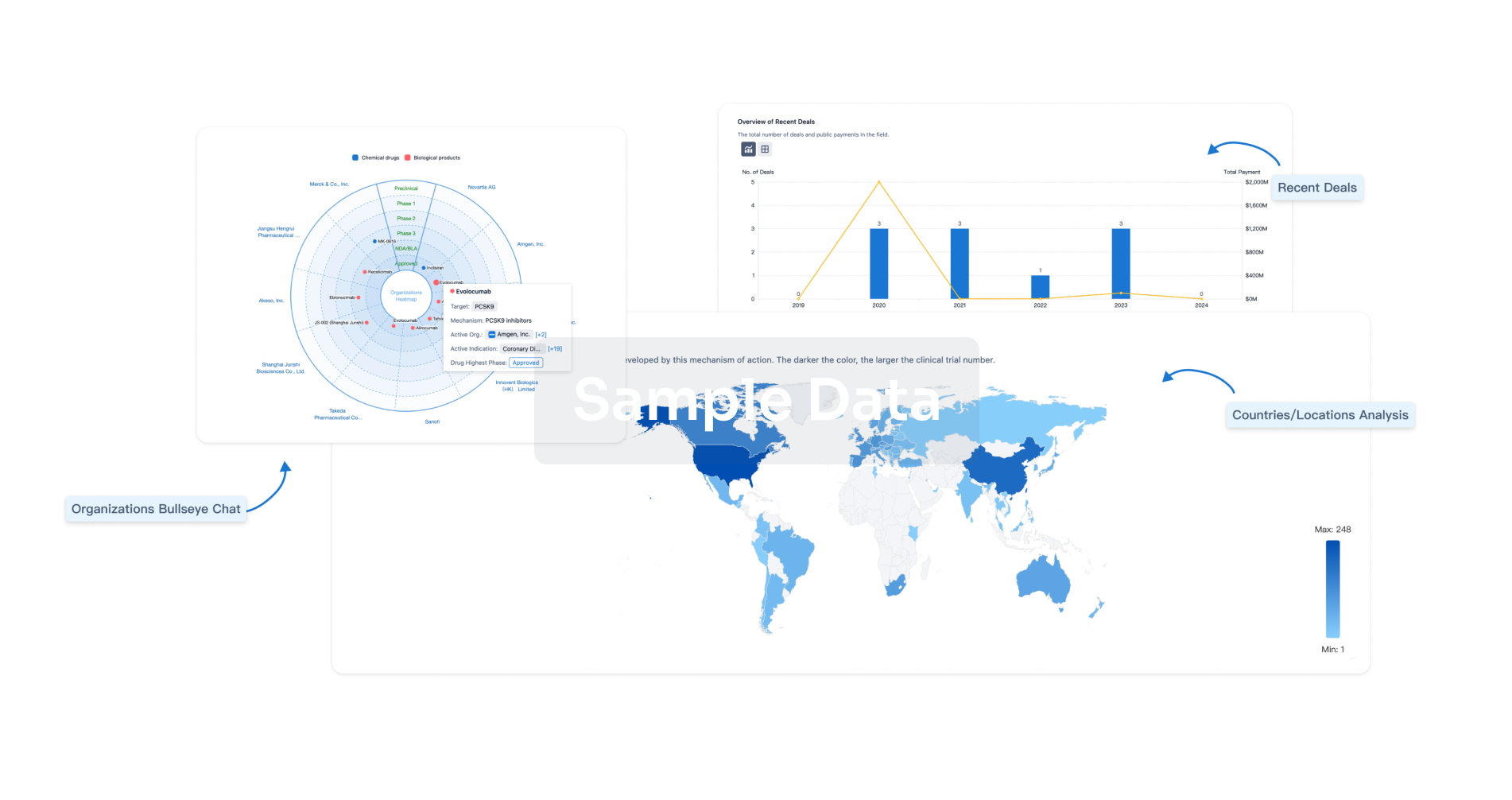Request Demo
Last update 08 May 2025
RORγ1
Last update 08 May 2025
Basic Info
Synonyms- |
Introduction- |
Related
1
Drugs associated with RORγ1Target |
Mechanism RORα inhibitors [+1] |
Active Org. |
Originator Org. |
Active Indication |
Inactive Indication- |
Drug Highest PhasePreclinical |
First Approval Ctry. / Loc.- |
First Approval Date20 Jan 1800 |
100 Clinical Results associated with RORγ1
Login to view more data
100 Translational Medicine associated with RORγ1
Login to view more data
0 Patents (Medical) associated with RORγ1
Login to view more data
16
Literatures (Medical) associated with RORγ101 Dec 2024·Biochemical Pharmacology
MNAM enhances Blautia abundance and modulates Th17/Treg balance to alleviate diabetes in T2DM mice
Article
Author: Li, Ling ; Li, Ping ; Liu, Ruiqi ; Zhang, Jingfan ; Chen, Yu
01 Apr 2024·Structure
Structural characterization of the DNA binding mechanism of retinoic acid-related orphan receptor gamma
Article
Author: Jiang, Longying ; Chen, Zhuchu ; Wei, Hudie ; Liu, Xueke ; Chen, Yongheng ; Dai, Shuyan ; Xiao, Desheng ; Liang, Xujun ; Guo, Ming
01 Mar 2024·Archives of Rheumatology
Aryl hydrocarbon receptor gene expression in ankylosing spondylitis and its correlation with interleukin-17, RAR-related orphan receptor gamma t expression, and disease activity indices
Article
Author: Soleimanifar, Narjes ; Assadiasl, Sara ; Rostamian, Abdolrahman ; Mojtahedi, Hanieh ; Sadr, Maryam ; Ahmadi, Maryam ; Hossein Nicknam, Mohammad ; Mazari, Abeda
Analysis
Perform a panoramic analysis of this field.
login
or

AI Agents Built for Biopharma Breakthroughs
Accelerate discovery. Empower decisions. Transform outcomes.
Get started for free today!
Accelerate Strategic R&D decision making with Synapse, PatSnap’s AI-powered Connected Innovation Intelligence Platform Built for Life Sciences Professionals.
Start your data trial now!
Synapse data is also accessible to external entities via APIs or data packages. Empower better decisions with the latest in pharmaceutical intelligence.
Bio
Bio Sequences Search & Analysis
Sign up for free
Chemical
Chemical Structures Search & Analysis
Sign up for free
